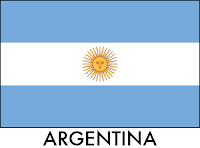
My day job is in quality assurance. It's not a topic I talk about a lot here--I'm very engaged in the subject and it keeps the lights on at Casa de Benito, but it doesn't apply much to the kind of wine and food that I write about most often.
That's not to say that philosophies like
Lean Six Sigma don't have a place in the world of food and beverages, it's just that you see the greatest implementations in mass-produced factory brands. My own home cooking is wildly inefficient, delicious, yet often inconsistent because I'm constantly tinkering with recipes. Your neighborhood baker can focus on making a dozen baguettes and a few hundred cookies without employing efficiency strategies, but the supplier for a national chain of grocery stores is going to have to use the Japanese-inspired manufacturing techniques that have been refined over the past forty years. Concepts like
kaizen (continuous improvement) and 5S (sort, straighten, shine, standardize, sustain).
The macrobrew beer industry has fully embraced this, which is why every Budweiser you taste anywhere will taste exactly the same, and through a commitment to quality improvement, the amount of water required to make the beer goes down every year. Not just the water used in brewing, but all of the water used for cleaning the facility and preparing ingredients. More detail on the efficiency of the modern beer industry is available in my review of the industry book
Beer Is Proof God Loves Us.
Wine is a little different, and often gets treated more like art than science. A lot of people lose money making amazing wine. Outstanding producers often have small patches of land that are unique and beautiful but can't really scale up to industrial production. Serious wines have characteristics that depend on the weather in the summer and how a certain volcano eroded ten million years ago. On the bargain side, it is possible to make mass produced, industrial wine. There's lots of it on the market and, although you don't read a lot about it, those jug/box wines keep many wine shops in business while the customers showing up looking for single vineyard Viognier only show up once in a blue moon.

Not every Cabernet Sauvignon needs to taste the same, and we can still enjoy the fact that a difference of a few miles will determine how your white Burgundy shows in the glass. But there are elements of wine production that can benefit from quality assurance while still delivering a product with artistic integrity. Here I am returning to my February visit to the
Nomacorc factory in North Carolina. The factory holds many Six Sigma awards as well as multiple
quality certifications. Their impact on the wine world is not to make every wine on the market taste the same, but to ensure that every individual bottling of a specific wine is free from the variation (and potential spoilage) due to the random performance of traditional corks. Moving beyond that goal, the company works to match the perfect cork with the desired oxygen transfer rate needed by the wine in question.
How do you figure that out? It takes some time. The above photo shows the development of the Nomacorc over twenty years, demonstrating how that commitment to
kaizen takes the product from a relatively simple alternative enclosure to a highly sophisticated and technically superior choice over the traditional cork. From the labeling of bins and floor markers to the signs about 5S compliance to the tester who would plug a bottle and show you exactly how many Newtons of force were required to pull the cork to the engineers who perform testing on all of the raw materials, the factory is a model of modern lean manufacturing.
We got to try a couple of wines for a controlled experiment, starting with a Hungarian Chardonnay. Our group sampled the same wine from bottles enclosed with three different Nomacorcs. Each one was a little different, and I think most of us enjoyed the middle option that wasn't too bright or too restrained. Opinions also varied on a Cabernet Franc presented in the same way. The synthetic cork with the most oxygen transfer would probably be the most welcoming in a restaurant situation (soft and fruit forward), but I enjoy how that particular tannic grape opens up over time, so I preferred the enclosure with the least oxygen transmission. The Nomacorc technology allows the winemaker to select the perfect synthetic cork for the desired presentation.
A quick note on these tastings: the comparisons against different types of Nomacorcs are very useful, but comparisons against natural cork are difficult due to the wide variation introduced. Comparing against things like
agglomerated corks is easier due to the fact that TCA contamination tends to spread out evenly amongst an entire production run. Screwcaps--and I'm a big fan of them for "drink now" table wines--also present their own problems with consistency when it comes to oxygen transfer over time.
It is possible to introduce science and modern quality assurance into the world of wine without sacrificing the art. From everything that I heard at Nomacorc, glass bottles are wildly unpredictable (and their corks are designed to work within a wide delta of internal neck diameter). There are probably efficiencies of labeling and shipping that are already happening behind the scenes. While we embrace the tradition and romance of the old ways of making wine, it is important to take advantage of modern technology that can deliver a better and more enjoyable wine experience for everyone.
Note: This trip was sponsored by Nomacorc. All opinions are my own.
 2012 Argento Malbec
2012 Argento Malbec



























